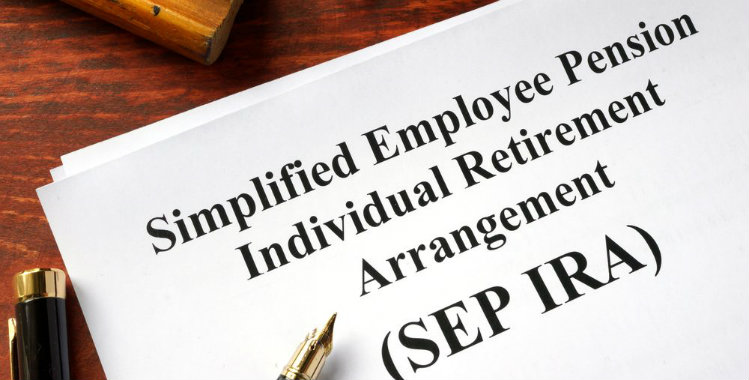The Self-Directed SEP IRA
A Self-Directed SEP IRA is a great way for individuals who are self-employed to establish a retirement account. Contrasting a traditional SEP IRA, a Self-Directed SEP IRA allows individuals to diversify their retirement accounts by investing in alternative assets. The decision to open a Self-Directed SEP IRA allows individuals to diversify their retirement accounts by investing in what they know. However, it is important to note that not all Self-Directed SEP IRA custodians allow individuals to purchase the same assets. Instead, some companies only allow individuals to purchase Cryptos or precious metals. At IRA Financial, your Self-Directed SEP IRA allows you to invest in a wide range of diversified assets.
Read More: Alternative Investments in an IRA
The SEP IRA
The SEP IRA was designed for self-employed individuals and small business owners. This is very similar to the Solo 401(k) but with a few differences. Any contributions you make to a SEP IRA are tax-deductible. Additionally, earnings within the account are tax-free until you make a withdrawal. However, before opening a Self-Directed SEP IRA, it is important to consider its benefits and limitations. For example, did you know you can invest more in a Solo 401(k)? In addition, a Self-Directed 401(k) has unique features such as the ability to take a loan against your retirement funds, and the ability to use non-recourse financing to invest in real estate.
Learn More: Why Choose a Solo 401(k) vs. a SEP IRA
Self-Directed SEP IRA Investments
With a Self-Directed SEP IRA, you can invest in almost anything. Popular investments in a Self-Directed SEP IRA include:
Real Estate:
Commercial properties (office buildings, retail centers, hotels, shopping centers, hospitals, etc.)
Residential properties (single-family homes, multi-family homes, condos, townhomes, duplexes, apartments, vacation homes, etc.)
Raw land, farmland, timberland
Foreclosures and fix-and-flip properties
Crowdfunding investments (e.g., private REITs)
Tax Liens and properties
Private Placements and LLCs:
Invest in private companies, startups, or joint ventures.
Participate in private equity, hedge funds, and venture capital.
Loans and Promissory Notes:
Lend money through hard money loans or peer-to-peer lending platforms.
Precious Metals:
Hold gold, silver, and other precious metals that meet certain purity standards.
Traditional Investments:
Stocks, bonds, and mutual funds
I bonds & T-Bills
Cryptocurrency:
Invest in digital currencies like Bitcoin or Ethereum.

How to Fund a Self-Directed SEP IRA
There are multiple ways that individuals can fund their new Self-Directed accounts. Individuals can easily open an account with IRA Financial through our app, online, or by calling one of dedicated professionals. Individuals who wish to open a Self-Directed SEP IRA can easily begin funding their new accounts by transferring money directly from your bank. In other cases, individuals may want to change IRA custodians. For example, you may already have a Self-Directed SEP IRA with another provider. Individuals have the option to roll their existing Self-Directed IRAs to IRA Financial.
One common reason that individuals decide to move their existing Self-Directed SEP accounts to IRA Financial is due to our fee structure. Although many Self-Directed IRA custodians offer “free accounts,” they fail to mention account valuation fees and transaction fees. IRA Financial is one of the few Self-Directed IRA Custodians that use a flat fee structure. This means you pay a pre-established fee annually.
Another common reason individuals decide to move their Self-Directed SEP IRA to IRA Financial is due to the large diversity of assets you can hold in your IRA. Although many companies offer Self-Directed SEP IRAs, some simply offer the ability to invest in Cryptos or precious metals. However, at IRA Financial, you can invest in almost anything. While there are some stipulations on Self-Directed investments, we commonly see individuals use their retirement funds to purchase real estate, hard-money loans, invest in private companies, and more!
Many people ask if they can use their existing retirement accounts to fund a Self-Directed IRA. Individuals can use their existing retirement accounts to fund their Self-Directed SEP IRA or Solo 401(k) plans. The process is called a transfer or a rollover. Transfers and rollovers are types of transactions that allow the movement of assets like IRAs. For example:
- Traditional IRA to Traditional IRA. This includes Traditional IRAs that contain simplified employee pension (SEP) contributions.
A Self-Directed SEP IRA transfer is the most common method of funding a Self-Directed IRA LLC or Self-Directed Roth IRA.
Transfer a SEP IRA to a Self-Directed SEP IRA
A transfer from a Traditional IRA to a Traditional IRA is one of the most common methods of moving assets from one IRA to another. This includes Traditional IRAs that contain Self-Directed SEP IRA contributions.
A transfer usually occurs between two separate financial organizations. However, a transfer may also occur between IRAs in the same organization. If an IRA transfer is handled correctly the transfer is neither taxable nor reportable to the IRS.
With an IRA transfer, the IRA holder directs the transfer but does not actually receive the IRA assets. Instead, the distributing and receiving financial institutions will complete the transfer.
Basically, in order for the IRA transfer to be tax-free and penalty-free, the IRA holder must not receive the IRA funds in a transfer. Rather, the check must be payable to the new IRA custodian. Also, there is no reporting or withholding to the IRS on an IRA transfer.
Self-Directed SEP IRA Transfer Experts & Advantages
At IRA Financial, we are here to help you take back control of your retirement. While other Self-Directed IRA custodians exist, IRA Financial has these distinct advantages:
- Expertise: Our team has decades of experience in self-directed IRAs and alternative investments.
- Self-Directed IRAs: Break free from the cookie-cutter approach. With our self-directed IRAs, you can invest in real estate, precious metals, private companies, and more.
- Education: We empower you with knowledge. Attend our webinars, read our articles, and become a savvy investor.
- Personalized Service: No call centers here! When you reach out, you’ll talk to a real person who genuinely cares about your financial goals.
How to Transfer a SEP IRA to a Self-Directed SEP IRA
You receive a retirement tax professional to achieve a Self-Directed SEP IRA. He or she will work with you to establish your new Self-Directed IRA account at a new FDIC and IRS-approved IRA custodian.
Then, the new custodian will request the transfer of your SEP IRA assets from the existing IRA custodian. Of course, they will only do this after your consent. The transfer will be tax-free and penalty-free.
Once the transfer of IRA funds is either complete by wire or check tax-free to the new IRA custodian, the new custodian will be able to invest the IRA assets into the new IRA LLC “checkbook control” structure. With the newly funded IRA LLC, you become the manager of the LLC. This provides you with checkbook control over your retirement funds and investments.
60-Day Rollover Rule for the Self-Directed SEP IRA
Most IRA holders have 60 days from receipt of the eligible rollover distribution from a SEP IRA account to fund the Self-Directed IRA LLC.
The 60-day period starts the day after the individual receives the distribution. Usually, no exceptions apply to the 60-day time period. However, in cases where the 60-day period expires on a Saturday, Sunday, or legal holiday, the individual may execute the rollover on the following business day.
Rollover All or a Portion of your Funds/Assets
If you receive an eligible rollover distribution, you can rollover the entire amount you receive or just a portion. The amount of the eligible rollover distribution that doesn’t go into an IRA is generally included in your gross income. As a result, it may be subject to a 10% early distribution penalty if you are under the age of 59 1/2.
Contact Us
Did You Know?
Your current SEP IRA can be changed over to a Self-Directed SEP IRA structure, tax and penalty-free. And when your new custodian handles all the paperwork, it can be a relatively painless alteration.













